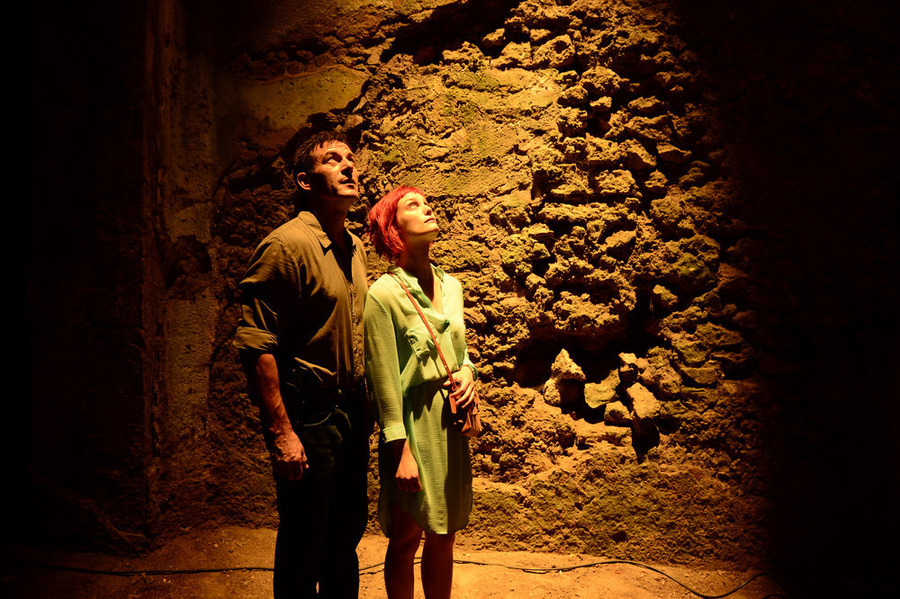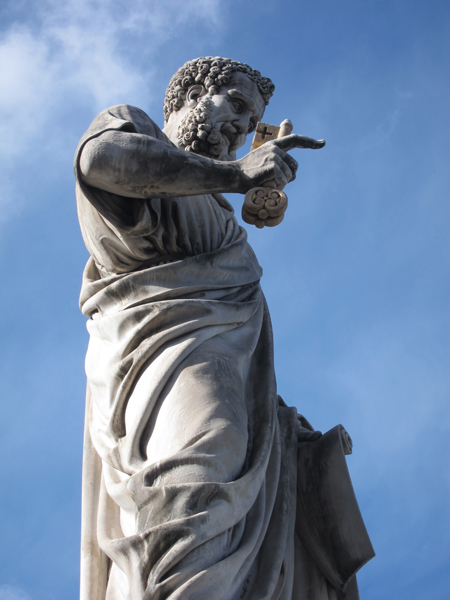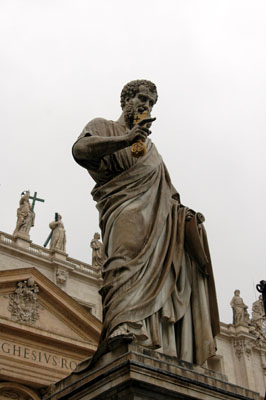
Jason Isaacs, left, as Peter Connelly and Alison Sudol as Emma Wilson in the first season of “Dig.” Photo by Ronen Akerman/USA Network
(RNS) Detective Golan Cohen, one of the primary characters in “Dig,” the USA Network’s biblical conspiracy action-thriller series, said it best: “This thing is getting weirder by the minute.”
Yes, Golan, it is.
Especially as the 10-part series, which airs Thursday nights at 10 p.m. EST, reached its penultimate episode this week. Thrown into what was already a heady mix of end-of-the-world predictions, secret sects and stolen relics are hidden passageways, cryptic messages and murder.
Through it all, religion and faith have been and continue to be major factors in the series. Here are the religious facts behind the latest fictional episode.
The righteous ones
In “Dig,” the character known only as “The Essene” tells FBI agent Peter Connelly (Jason Isaacs): “You have a part to play, and if you fulfill your role you will bring healing to yourself and the world.”
Don’t you love a holy man who speaks in riddles? The show’s writers may be referring to the Jewish notion of “tzadikim nistarim.” Drawn from the Torah by Jewish mystics, this idea holds that at any given time there are at least 36 living “righteous ones,” with the ability to save humanity. And, as “Dig” is headed toward the battle of Armageddon, humanity could use a savior or two. Or even 36.
Judaism teaches that these righteous individuals are not aware of their status; nor do they know each other. They may be called upon at any time to save humanity, and afterward they will “disappear” back into the communities they came from.
If the writers of “Dig” are headed in this direction — and viewers won’t know until the final episode airs on May 7 — they are in good pop culture company. The idea of the tzadikim nistarim has been incorporated into novels by Jodi Picoult, Neil Gaiman, Michael Chabon and even Deepak Chopra. It’s even been on television before, in the short-lived Fox series “Touch.”
And here’s another clue that “Dig” may be headed this way: “Touch” was created by Tim Kring, who is also co-creator and executive producer of “Dig.”
Bible roulette
In one scene, Peter is shown reaching for a Bible, turning it spine-up, spreading the pages and randomly picking a verse. He calls this “Bible roulette.”
This is a thing. A “player” holds a question for God in his or her mind, opens the Bible and there, supposedly, is the answer. Anyone can play, though evangelicals and other biblical literalists are the usual players.
There’s even a Bible roulette app.
But Bible roulette is not without controversy. Some Christians say the Bible is not a vending machine there to dispense counsel on demand, nor should it be relied upon for stupid questions, like what car to buy or what color to paint your house. Still others worry that people in need of real counseling — perhaps for depression or suicidal thoughts — will open to something like Matthew 27:5: “Then Judas went out and hanged himself.”
So what verse does Peter get?
“Do not think it strange concerning the fiery trial which is to try you,” he reads. “Be sober, be vigilant, because your adversary, the devil, walks around like a lion.”
That verse is from a New Testament book Christians call — SURPRISE! — 1 Peter, believed to be the first letter written by Peter, an apostle of Jesus, to some Christian exiles. Most scholars date it to about 81 A.D., though they are divided over its authorship.
Why is this relevant to “Dig”? The Apostle Peter became the first Bishop of Rome and the founder of the Roman Catholic Church. He was crucified — upside down — by Emperor Nero. It is Peter’s bones that the church believes are buried under the altar of St. Peter’s Basilica, also named for him.
“Thou art Peter, and upon this rock I will build my church,” Jesus says to Peter in Matthew 16, one of the most quoted Bible verses. “And the gates of hell shall not prevail against it.”
That’s good, because all signs in “Dig” indicate the “gates of hell” are about to be flung wide open.
The end is nigh?
When the bad guys come under attack, their leader, Pastor Billingham (David Costabile), says: “Let’s keep our eyes on the prize. First Jehoshaphat. Then Armageddon.”
Armageddon is the place where, according to the New Testament’s Book of Revelation, the final battle between the returned Jesus and the Anti-Christ will occur. It is an actual place, a desert plain, outside the city of Jerusalem, where much of “Dig” takes place.
Many Christians believe the Battle of Armageddon is a metaphor — a dream of Revelation’s author, John of Patmos. But other Christians believe it is a prediction — an outline of the horror that will come before the end of the world. The Christian sect in “Dig” believes the latter.
So for the last episode of “Dig,” expect any or all of the following: four horsemen, poisoned rivers, 144,000 Hebrews, seven seals, eight angels, seven golden trumpets, a seven-headed beast and a Whore of Babylon.
Should be quite a party.
KRE/MG END WINSTON






